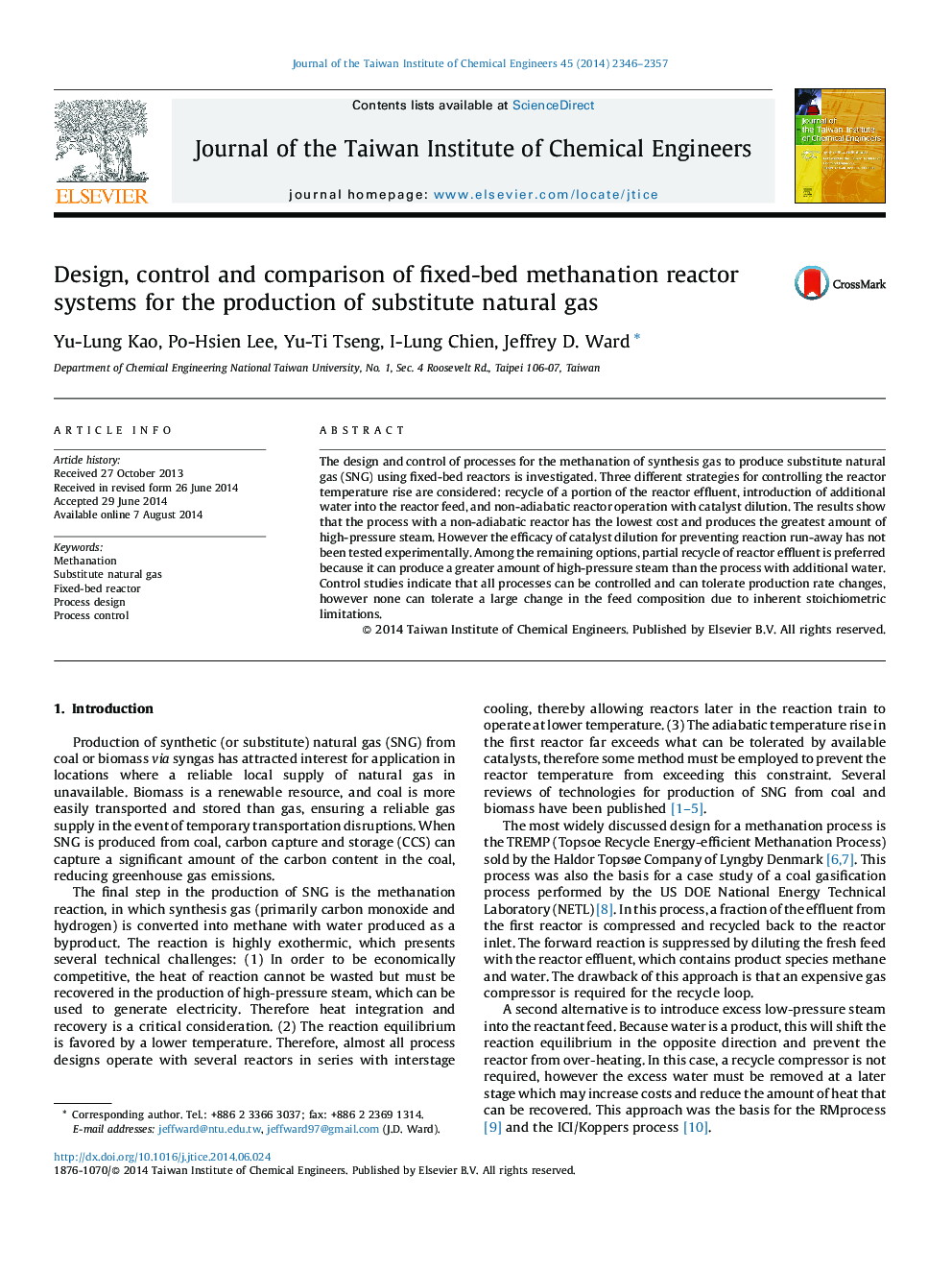| Article ID | Journal | Published Year | Pages | File Type |
|---|---|---|---|---|
| 691497 | Journal of the Taiwan Institute of Chemical Engineers | 2014 | 12 Pages |
•Design alternatives for fixed bed methanation reaction systems are compared.•A process with a non-adiabatic reactor and catalyst dilution has the lowest cost.•All processes respond well dynamically to feed flow rate disturbances.•Processes cannot accommodate feed composition disturbances because of stoichiometry.
The design and control of processes for the methanation of synthesis gas to produce substitute natural gas (SNG) using fixed-bed reactors is investigated. Three different strategies for controlling the reactor temperature rise are considered: recycle of a portion of the reactor effluent, introduction of additional water into the reactor feed, and non-adiabatic reactor operation with catalyst dilution. The results show that the process with a non-adiabatic reactor has the lowest cost and produces the greatest amount of high-pressure steam. However the efficacy of catalyst dilution for preventing reaction run-away has not been tested experimentally. Among the remaining options, partial recycle of reactor effluent is preferred because it can produce a greater amount of high-pressure steam than the process with additional water. Control studies indicate that all processes can be controlled and can tolerate production rate changes, however none can tolerate a large change in the feed composition due to inherent stoichiometric limitations.
